Text
Injury angst for writing dummies.
Hospitals and injury are always such a staple of angst fics, but 9 times out of 10 the author has clearly never been in an emergency situation and the scenes always come off as over-dramatized and completely unbelievable. So here’s a crash course on hospital life and emergencies for people who want authenticity. By someone who spends 85% of her time in a hospital.
Emergency Departments/Ambulances.
Lights and sirens are usually reserved for the actively dying. Unless the person is receiving CPR, having a prolonged seizure or has an obstructed airway, the ambulance is not going to have lights and sirens blaring. I have, however, seen an ambulance throw their lights on just so they can get back to the station faster once. Fuckers made me late for work.
Defibrillators don’t do that. You know, that. People don’t go flying off the bed when they get shocked. But we do scream “CLEAR!!” before we shock the patient. Makes it fun.
A broken limb, surprisingly, is not a high priority for emergency personnel. Not unless said break is open and displaced enough that blood isn’t reaching a limb. And usually when it’s that bad, the person will have other injuries to go with it.
Visitors are not generally allowed to visit a patient who is unstable. Not even family. It’s far more likely that the family will be stuck outside settling in for a good long wait until they get the bad news or the marginally better news. Unless it’s a child. But if you’re writing dying children in your fics for the angst factor, I question you sir.
Unstable means ‘not quite actively dying, but getting there’. A broken limb, again, is not unstable. Someone who came off their motorbike at 40mph and threw themselves across the bitumen is.
CPR is rarely successful if someone needs it outside of hospital. And it is hard fucking work. Unless someone nearby is certified in advanced life support, someone who needs CPR is probably halfway down the golden tunnel moving towards the light.
Emergency personnel ask questions. A lot of questions. So many fucking questions. They don’t just take their next victim and rush off behind the big white doors into the unknown with just a vague ‘WHAT HAPPENED? SHE HIT HER HEAD?? DON’T WORRY SIR!!!’ They’re going to get the sir and ask him so many questions about what happened that he’s going to go cross eyed. And then he’s going to have to repeat it to the doctor. And then the ICU consultant. And the police probably.
In a trauma situation (aka multiple injuries (aka car accident, motorbike accident, falling off a cliff, falling off a horse, having a piano land on their head idfk you get the idea)) there are a lot of people involved. A lot. I can’t be fucked to go through them all, but there’s at least four doctors, the paramedics, five or six nurses, radiographers, surgeons, ICU consultants, students, and any other specialities that might be needed (midwives, neonatal transport, critical retrieval teams etc etc etc). There ain’t gonna be room to breathe almost when it comes to keeping someone alive.
Emergency departments are a life of their own so you should probably do a bit of research into what might happen to your character if they present there with some kind of illness or injury before you go ahead and scribble it down.
Wards
Nurses run them. No seriously. The patient will see the doctor for five minutes in their day. The nurse will do the rest. Unless the patient codes.
There is never a defibrillator just sitting nearby if a patient codes.
And we don’t defibrillate every single code.
If the code does need a defibrillator, they need CPR.
And ICU.
They shouldn’t be on a ward.
There are other people who work there too. Physiotherapists will always see patients who need rehab after breaking a limb. Usually legs, because they need to be shown how to use crutches properly.
Wards are separated depending on what the patient’s needs are. Hospitals aren’t separated into ICU, ER and Ward. It’s usually orthopaedic, cardiac, neuro, paediatric, maternity, neonatal ICU, gen surg, short stay surg, geriatric, palliative…figure out where your patient is gonna be. The care they get is different depending on where they are.
ICU.
A patient is only in ICU if they’re at risk of active dying. I swear to god if I see one more broken limb going into ICU in a fic to rank up the angst factor I’m gonna shit. It doesn’t happen. Stop being lazy.
Tubed patients can be awake. True story. They can communicate too. Usually by writing, since having a dirty great tube down the windpipe tends to impede ones ability to talk.
The nursing care is 1:1 on an intubated patient. Awake or not, the nurse is not gonna leave that room. No, not even to give your stricken lover a chance to say goodbye in private. There is no privacy. Honestly, that nurse has probably seen it all before anyway.
ICU isn’t just reserved for intubated patients either. Major surgeries sometimes go here post-op to get intensive care before they’re stepped down. And by major I mean like, grandpa joe is getting his bladder removed because it’s full of cancer.
Palliative patients and patients who are terminal will not go to ICU. Not unless they became terminally ill after hitting ICU. Usually those ones are unexpected deaths. Someone suffering from a long, slow, gradually life draining illness will probably go to a general ward for end of life care. They don’t need the kind of intensive care an ICU provides because…well..they’re not going to get it??
Operations.
No one gets rushed to theatre for a broken limb. Please stop. They can wait for several days before they get surgery on it.
Honestly? No one gets ‘rushed’ to theatre at all. Not unless they are, again, actively dying, and surgery is needed to stop them from actively dying.
Except emergency caesarians. Them babies will always get priority over old mate with the broken hip. A kid stuck in a birth canal and at risk of death by pelvis is a tad more urgent than a gall stone. And the midwives will run. I’ve never seen anyone run as fast as a midwife with a labouring woman on the bed heading to theatres for an emergency caesar.
Surgery doesn’t take as long as you think it does. Repairing a broken limb? Two hours, maybe three tops. Including time spent in recovery. Burst appendix? Half an hour on the table max, maybe an hour in recovery. Caesarian? Forty minutes or so. Major surgeries (organs like kidneys, liver and heart transplants, and major bowel surgeries) take longer.
You’re never going to see the theatre nurses. Ever. They’re like their own little community of fabled myth who get to come to work in their sweatpants and only deal with unconscious people. It’s the ward nurse who does the pick up and drop offs.
Anyway there’s probably way, way more that I’m forgetting to add but this is getting too long to keep writing shit. The moral of the story is do some research so you don’t look like an idiot when you’re writing your characters getting injured or having to be in hospital. It’s not Greys Anatomy in the real world and the angst isn’t going to be any more intense just because you’re writing shit like it is.
Peace up.
56K notes
·
View notes
Photo

So I just started my short story writing class! These are dialogue tips
85K notes
·
View notes
Text
Roles on a Pirate Ship
[by Mark Cookman / Tribality 1, 2, 3] @we-are-pirate, @we-are-scarlet-corsair

Officer Roles on a Pirate Ship
If you are running a game with pirates in it, then you should know what the job entails. It’s not all boarding ships, counting booty, and drinking rum like you might think. A great deal of hard work is required to run a sailing ship with a law-abiding crew, let alone one populated by pirates. In this essay we are going to examine the five principle officers on board a pirate ship, their duties, and their responsibilities. This is part one of a three part lesson. In the next lesson we will examine the duties and responsibilities of other officers and crew members with special duties. In the final lesson, we will look at one very special group of crew members that are almost always overlooked. Read on to learn what pirates expected of their primary officers.
The principal officers of a pirate ship were the captain, the quartermaster, the pilot, the boatswain, and the master gunner. On some ships these positions were all elected by an equal vote of the crew and on others the captain picked the crew members he wanted to serve in the positions. The captain on a pirate vessel was almost always elected by an equal vote of the crew. On a privateer vessel this was not very often the case. Privateer captains were often the owners of the ship or were given commission by their monarch to take a vessel to sea. So it follows with the other officers. If the captain was elected, then generally all of the officers were elected. If the captain was appointed or held his position by means of ownership, then generally he picked the officers. In either case, an officer on a pirate ship served at the whim of the crew. Even a man picked by the captain would be booted down to a simple crewman if he could not do his job. For the most part though, a person elevated to serve as one of the principle officers did so for life. The title of this article refers to the fact that most often the authorities that captured, tried, and hung pirates concentrated on the five principle officers of the ship. These officers were generally the most intelligent and skilled crewmen on board the pirate vessel. They were people that everyone else on board the ship admired for their ability to do their job. Diligent action is the mother of respect on board a ship.
Captain
The captain, however he came to his position, was chosen for his leadership, bravery, and cunning. The captain was responsible for the ship and everything aboard her; every item and every man. He was responsible for the overall decisions affecting the ship and her crew. The captain decided where to sail and what to attack. He was the voice of his crew to all beyond the ship. He often led his crew in battle. In terms of daily duties, the captain kept a log of the voyage, managed the affairs of the ship through the officers, and generally served a four to six hour shift at the helm. The captain stayed in power by being successful. As long as there are prizes to plunder, rum to drink, and food to eat, the captain will not be voted out or mutinied against. It is when things get lean that the captain must worry about crew voting him unfit for command.
Quartermaster
The quartermaster (or first mate on a privateer vessel) was the number two man on the ship. He was responsible for enforcing the ship’s articles and administering punishment when necessary. The quartermaster was the trustee of the ship and her crew. He directly represented the crew to the captain. It was his responsibility to serve as a counterbalance to the captain in decisions that might be hazardous to the ship or the crew. A wise captain made no decisions that his first mate didn’t support. The quartermaster took responsibility for prize vessels and picked the treasure that the crew would take from a prize. He was also responsible for counting the booty and splitting the shares. Each day would find him working with his subordinate officers the boatswain, the master gunner, and the master at arms to effectively run the ship. The first mate also served a turn at the helm, generally a four to six hour shift.
Pilot
The pilot was the number three man on the ship and often the most educated. He served as the ship’s navigator and was generally the best all around sailor aboard the ship. He was responsible for plotting the ship’s course and maintaining that course. The pilot maintained all of the ship’s charts and maps as well as the tools of navigation. He was charged with keeping a daily log of every event relating to the sailing of the ship. He recorded the depth, the currents, the wind patterns, the ship’s location, the locations of reefs and sandbars, and the state of the rigging. He reported directly to the captain. The pilot oversaw the work of the sail-master and almost always had at least one assistant (a pilot’s mate) to help him with his duties. The pilot and his mate both served separate shifts at the helm in addition to taking readings from the moon and stars to plot and maintain the course.
Boatswain
The boatswain was the number four man on the ship and often the most feared by the crew. He was in charge of the provisions for the ship. He maintained the stores of food, water, rum, gunpowder, shot, sails, rope, wood, and tar required to keep the ship and crew fit for action. The boatswain also directed the loading of cargo into the hold to maintain the proper ballast to ensure level sailing. He was in charge of keeping the watches on the ship and maintaining discipline among the deck crew. He was responsible for the ship’s longboats and for picking a crew to man the sweeps when the longboats were used. The boatswain was charged with maintaining the ship’s seaworthy status. He oversaw the duties of both the carpenter and the cook. The boatswain generally had a mate to help him with his responsibilities. In general, his duties were to make certain that all the work of running the ship was done. He reported to the quartermaster. The Boatswain was often the most feared man on the ship because his obligations often made him uncompromising. It was his responsibility to keep everything “ship-shape”. Leniency was something the quartermaster might give to the crew, but it was not something the boatswain was in the position to give. Day and night, the boatswain would drive the crew to do whatever work was required. He maintained the watch log and reported any problems to the quartermaster.
Master Gunner
The master gunner was the number five man on the ship. He was responsible for the care and cleaning of all firearms, culverin (deck guns), and cannons on board the ship. He was also responsible for training the crew in the use of both firearms and ship’s weaponry. The master gunner picked and ran the gunnery crew. He reported to the quartermaster, but was responsible to the entire ship to make certain that the cannons hit the declared target. He was also responsible for maintaining the inventory of powder and shot for all of the guns on the ship. The master gunner was the only crew member besides the captain and the quartermaster entrusted to carry a key to the ship’s powder magazine. Additionally, the master gunner often led or picked hunting parties when they were called for. His day to day duties mainly consisted of drilling the gunnery crew and maintaining the guns.
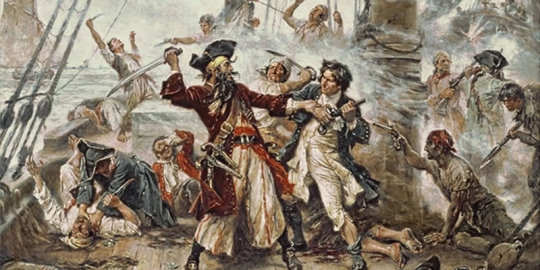
The Next in Line to Hang – More Roles on a Pirate Ship
In this second part of a three part lesson dealing with the crew positions aboard a pirate vessel, we are going to look at the responsibilities of the Sail-master, the Carpenter, the Cook, the Surgeon, and the Master at Arms. These were all lower officer positions and were either voted upon or assigned by the captain as discussed in the first part of this lesson. The sailors who served in these positions were skilled laborers and, as such, their skills were always very much in demand on a ship. They were almost always offered a greater share of the treasure because of their skills. These were definitely crew members that a pirate ship could not function without.
Sail-master
The Sail-master was the most experienced crewman in the rigging and usually one of the best sailors on the ship. He was responsible for maintaining the sails and the rigging. The Sail-master knew every knot, line, rope, block and tackle in the rigging as well as how to repair them all. He was also responsible for training and running the sail crew as well as overseeing the making and patching of sails. The Sail-master took orders from and reported to the pilot.
Carpenter
The Carpenter was a skilled wood worker, often with some shipwright experience, who did all of the woodworking required by the crew. He was primarily responsible for repairing damage to the wooden portions of the ship and for plugging leaks that got too bad. (Ye should understand right now, before ye go to sea, that all ships leak, mates. It’s just when they really leak badly that you have to worry about it.) The Carpenter was also responsible for the construction of barrels and crates, as needed, to store cargo, as well as maintaining the tools of his trade. He took orders from and reported to the Boatswain.
Cook
The Cook was one of the most important of the lower officers. He was in charge of all matters relating to food on the ship. He made certain there was enough food, water, and rum on board for the planned cruise. He cooked the meals and suggested rationing when it was necessary. The Cook butchered the meat brought back by hunting parties and was the only man trusted to light a fire below decks. He maintained the necessary tools for both cooking and butchering. The Cook took orders from and reported to the Boatswain.
Surgeon
The Surgeon was likely one of the toughest men on the ship. He served as the barber/doctor/emergency surgeon for the entire crew. He was equally capable of shaving your beard and cutting off your damaged leg. The Surgeon dealt with not only the sick and the wounded, but also the dead. He, like the other lower officers, was responsible for maintaining the necessary tools of his trade. The Surgeon took his orders from and reported to the Quartermaster. It was rare for a ship to have a real doctor and it was common for the carpenter or the cook to fill this role as needed.
Master at Arms
The Master at Arms was often the most skilled warrior on the crew. He was responsible for training the crew in hand to hand combat. He also led the ship’s boarding parties and hunting parties when they were necessary. The Master at Arms position was not a separate position on every vessel and often these responsibilities fell to the Quartermaster. When the Master at Arms position was filled on a ship, he took orders from and reported to the Quartermaster.
These 5 core positions represent the Non-Commissioned Officers of a pirate or privateer ship. These men all commanded other men on work details and so their words carried great sway with the crew. It was often from among these men that the next captain was chosen when a captain lost his position through a vote of no confidence. Thus, these were the men that the captain had to keep loyal to him to stay in command of the ship.
And Hang the Musikers, Too – Even More Roles on a Pirate Ship
In this article, we will be looking at the makeup of the crew itself. Remember that the only rule with pirates is that there are no rules; no two crews of any two pirate ships were exactly the same. Even so, we can narrow down some roles common to pirate/privateer crews based upon the jobs that must be done aboard ship. Most simply put, pirate crews are a mixture of brutes, gunners, swabbies, and musikers. Let’s examine each category in turn.
Brutes
A great deal of hard work and heavy hauling is involved in just sailing a tall-masted ship. In strong winds the canvas sails must be man-handled by a deck crew that is stronger. Loading and unloading supplies, most especially cannons or chests of gold, requires a number of strong backs. This is why every ship has its share of brutes – big, strong men capable of handling themselves no matter the work or the fight. In addition to the tasks already mentioned, brutes would be key men in hunting parties, ship boarding, and raiding groups as well. Keep in mind that not all brutes need to be hulking bruisers. A wiry-tough and dexterous hunter, skilled with both blades and long rifle, could be a brute as well. Brutes, no matter their size, do not shrink from a hard task. Men of this sort make up perhaps as much as ½ of a pirate crew, but they will be mixed among the gunners and swabbies, not a stand alone corp. Most of the men on a pirate or privateer ship were probably gunners.
Gunners
Depending upon the size of their shot, each cannon required a crew of either 3 or 4 men to load and fire it. So a sloop carrying 4 small guns per side would require a minimum of 24 men to fully maintain them and that does not include the officers directing the cannon fire. On a large ship, like Blackbeard’s Queen Anne’s Revenge, a full gun crew would be 160 men dedicated only to firing the cannons. (It is important to note here that Blackbeard had a total crew compliment of 125 on board the Queen Anne’s Revenge.) These crewmen would have to be available 24/7 to do their job whenever required, but otherwise might have no duties on the ship. There was double-duty in most crews though. Most pirate ships didn’t keep a full compliment of gunners like warships of the time did because fewer crew members meant fewer shares and that meant more money for everyone when the treasure was split. Gunners could make up between 1/3 to 2/3 of a crew.
Swabbies
Swabbies, or actual trained sailors, are the crew members responsible for handling the rigging and the sails to keep the ship moving. These are the guys and gals who climb the ratlines into the rigging and walk the spars that jut from the masts. Swabbies sometimes fight from the highest position that they can get to on their own ship and then leap into the rigging of the enemy vessel when boarding. Often dexterous fighters, swabbies are known for leaping into the fray, but sometimes they hide in the rigging as deadly snipers. It might be surprising to discover that skilled sailors usually comprised less than 1/3 of the total crew compliment of the ship.
Musikers
It is difficult to prove that “musikers”, or musicians as we call them, were ever a stand-alone part of a pirate crew. However, two excellent examples from the pirate period demonstrate that they have been a common part of most ships of war, pirate and privateer ships included. The first example is from the early Seventeenth century. In Captain John Smith’s advice concerning how to conduct a one-on-one naval engagement he remarks when preparing to board one should, “… sound Drums and Trumpets, and Saint George for England.” The second example comes from the early Eighteenth century. In the articles of Captain Bartholomew Roberts it is stated: “The Musikers to have Rest on the Sabbath Day, but the other six Days and Nights, none without special Favour.” When thinking about the musicians on board a ship in the 16th to 18th centuries, one must not think of a band. That would be far too organized a concept. There is no way to know how many crew members may have been musicians, but one assumes that the number is not large.
It is likely that ships of this period had crew members who owned musical instruments as varied as brass horns, mouth harps, fiddles, bag pipes and accordions. Furthermore, sailors could gather numerous instruments from the various ports of call their ship made. Examples here are numerous: cowhide and goatskin drums from Africa, dried gourd maracas from Cuba, bamboo drums and flutes from Hispaniola, and even tambourines from Morocco. Pause a moment and consider the combined sounds of all of the instruments mentioned here. Now you know why a band is not the idea you want to have. The musicians were popular with the crew, as they were entertainment as well as a valuable battle element. The musicians played during meal times and during work breaks allowing the crew some entertainment to break the monotony of long hours of tiring work. This boost in moral was welcome at anytime, but was perhaps the most effective when used in battle.
From stories of Bartholomew Roberts crew and others, we know that when a ship with musicians approached another ship with the intention to fight, the effects of the music could be terrifying to the enemy. The musicians would play marches and other martial music. There were drum rolls, trumpet and bugle calls, and perhaps even a piper given the nationality of the crew. Add to this the noise of the ship’s cook beating upon his pots and pans and the crew stamping their feet or beating their weapons against the ship. Finally top this off with the sounds of shouting, screaming, and shooting, both pistols and rifles as well as cannons and deck guns. Your imagination can supply you with the details of the scene. The intended result is achieved: the morale aboard the pirate vessel is raised to a fevered pitch while the morale of their intended prize is shaken. So do not forget that pirates and privateers know the value of bardic inspiration when you run those encounters.
19K notes
·
View notes
Text
i just saw a massive tutorial for formatting your writing for the web that involved pasting your text into ao3 first to generate html and it was really long and caused me physical pain to witness it so i’m just gonna remind you about
editors:
dillinger is a browser-based markdown editor that syncs with most cloud services, including google drive and dropbox. it has a text-focused mode and exports directly to html. you don’t have to make an account.
stackedit is a browser-based markdown editor that is basically identical but you can save files in your browser if that’s a thing you want to do for some reason. they like it when you sign in with google if you want to sync things.
ghostwriter is a markdown application for linux. they say it’s also for windows but that’s only barely technically true. if you find an old version it might work.
typora is a markdown editor that works for me in windows. i haven’t tried the linux or osx versions but they exist.
i use jotterpad to write in markdown on android and i sync it to my dropbox so i can switch between my phone and my computers.
markdown:
you probably already use it in apps like discord and don’t know it. do *this* to italicize. do **this** for bold. hit enter twice to make a new paragraph. do this *** or this — to make a horizontal rule. here’s a cheatsheet if you want to do other stuff like make a list.
when i am writing in typora, it looks like this:

if i want to post it on tumblr, i can just… activate markdown mode

i go into source code mode (because typora defaults to hiding the asterisks and letting you copy/paste rich text, which is also a thing you can do). i copy. i paste. i post. if i want to add more stuff i switch to rich text mode and add it. if i want to post it on ao3?

i export as unstyled html and open it in a text editor

ta-da
and ghostwriter makes it even easier because you can literally just copy your text as html. typora is supposed to have ‘copy as html’ but if it does i can’t find it. i think markdownpad has a similar feature but it’s ugly so i don’t care about it. in dillinger if you toggle the html preview it shows the code so you can just copy it. basically typora is the only one where you actually have to do this whole export thing.
you can even open and edit your markdown files in anything that can be used to edit a txt file, it just won’t show you the formatting or let you do any fancy html conversions. sometimes i edit my markdown files in focuswriter just because i can.
i don’t want to be patronizing and i know everyone has their workflow, but, like… using ao3 to convert your rich text to html is like five more steps than should ever be necessary to post on tumblr with your italics intact when you could just be doing *this*
4K notes
·
View notes
Text
Depths Domain

For those priests that worship deities of the oceanic abyss, the depths domain grants the cleric power over water, darkness, and the fear of the unknown.
Domain Spells
1st: armor of agathys, cause fear
3rd: darkness, hold person
5th: fear, wall of water
7th: control water, shadow of moil
9th: commune, maelstrom
Bonus Cantrip
When you choose this domain at 1st level, you gain the Shape Water cantrip if you don’t already know it.
Kraken’s Grasp
Keep reading
2K notes
·
View notes
Text
when you get to the yeti’s house in twilight princess
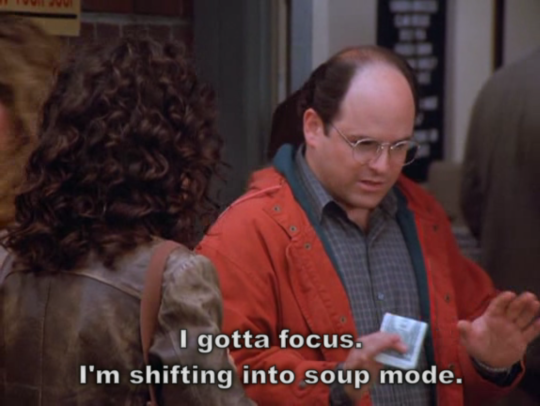
64K notes
·
View notes
Text
Out of curiosity, how do my fellow DMs prepare their campaigns?
Do you open up a word doc at type out your story hook and make little bullet points from there?
Do you wing it completely?
What’s your notes system like?
I’m simply looking for new ways to plan for my d&d games!
19K notes
·
View notes
Note
Hello! Would you mind doing an example of not using filter words in a first person point of view? While I know that you can just switch out the pronouns for I/me/my, I just want to see it in action and when you should (and shouldn't) use the filter words. Thank you!
Hi there! I would love to! I think I’ll start out with an example with filter words and then cut out the filter words to show you the difference.
For those of you who haven’t seen my post on Filter Words.
Now, for the example:
I felt a hand tap my shoulder as I realized I had made a huge mistake. I knew the consequences would be unsettling, but I had no other choice. I saw the light of my desk lamp bounce off of the officer’s badge before I had even turned around. It seemed like I always found my way into trouble.
It was the first thing off the top of my head, so it’s a bit rough sounding….
Now for without filter words (And a bit of revision):
A hand tapped my shoulder as it dawned on me: I had just made a huge mistake. The consequences would be unsettling if I didn’t get out of this mess, but I had no other choice. The light of my desk lamp bounced off of the officer’s badge. I always found my way into trouble.
By taking out filter words, you get right to the point.
I’d also like to add a few more notes that I didn’t have the chance to post previously.
Some Examples of Filtering:
I heard a noise in the hallway.
She felt embarrassed when she tripped.
I saw a light bouncing through the trees.
I tasted the sour tang of raspberries bursting on my tongue.
He smelled his teammate’s BO wafting through the locker room.
She remembered dancing at his wedding.
I think people should be kinder to one another.
How can you apply this?
Read your work to see how many of these filtering words you might be leaning on. Microsoft Word has a great Find and Highlight feature that I love to use when I’m editing. See how you can get rid of these filtering words and take your sentences to the next level by making stronger word choices. Take the above examples, and see how they can be reworked.
FILTERING EXAMPLE: I heard a noise in the hallway.
DESCRIBE THE SOUND: Heels tapped a staccato rhythm in the hallway.
FILTERING EXAMPLE: She felt embarrassed after she tripped.
DESCRIBE WHAT THE FEELING LOOKS LIKE: Her cheeks flushed and her shoulders hunched after she tripped.
FILTERING EXAMPLE: I saw a light bouncing through the trees.
DESCRIBE THE SIGHT: A light bounced through the trees.
FILTERING EXAMPLE: I tasted the sour tang of raspberries bursting on my tongue.
DESCRIBE THE TASTE: The sour tang of raspberries burst on my tongue.
FILTERING EXAMPLE: He smelled his teammate’s BO wafting through the locker room.
DESCRIBE THE SMELL: His teammate’s BO wafted through the locker room.
FILTERING EXAMPLE: She remembered dancing at his wedding.
DESCRIBE THE MEMORY: She had danced at his wedding.
FILTERING EXAMPLE: I think people should be kinder to one another.
DESCRIBE THE THOUGHT: People should be kinder to one another.
See what a difference it makes when you get rid of the filter? It’s simply not necessary to use them. By ditching them, you avoid “telling,” your voice is more active, and your pacing is helped along.
The above list is not comprehensive as there are many examples of filtering words. The idea is to be aware of the concept so that you can recognize instances of it happening in your work. Be aware of where you want to place the energy and power in your sentences. Let your observations flow through your characters with immediacy.
Ok, sorry for the lengthy answer, I know you just wanted an example…. sorry!
If you have any questions, feel free to ask at my ask box
69K notes
·
View notes
Photo
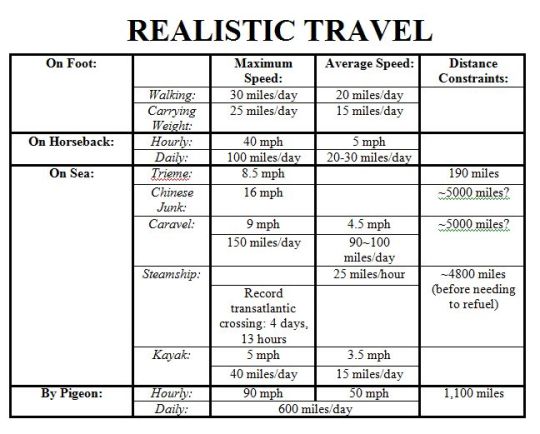
Writing a historical novel means knowing how far they can travel on a horse, This is good info right here.
(via Pinterest)
125K notes
·
View notes
Photo

So I just started my short story writing class! These are dialogue tips
85K notes
·
View notes
Text
short hairstyles for women/butches
note: don’t know who these are for the most part! they might be gay, i just found them on google images. also this isn’t a ranked list i just like numbers
1. tapered and long

the top two are probably the best approximation of this cut. i like it because it’s floofy but you don’t necessarily have to have curls to pull it off
2. bowl cut pixie

ngl i thought i wasn’t going to like this but i’m actually a huge fan. gives me kind of edgy lisbeth salander vibes. this would be a really good way for femmes to flag too because it’s kinda off center of straight fashion
3. buzzcut

a classique and sexie look. buzzcuts looks rly good when they’re dyed if you’re into that (i especially love obnoxiously bright colours). if we’re doing characters, this reminds me of furiosa obviously and we all know she’s a lesbian legend
4. undercut
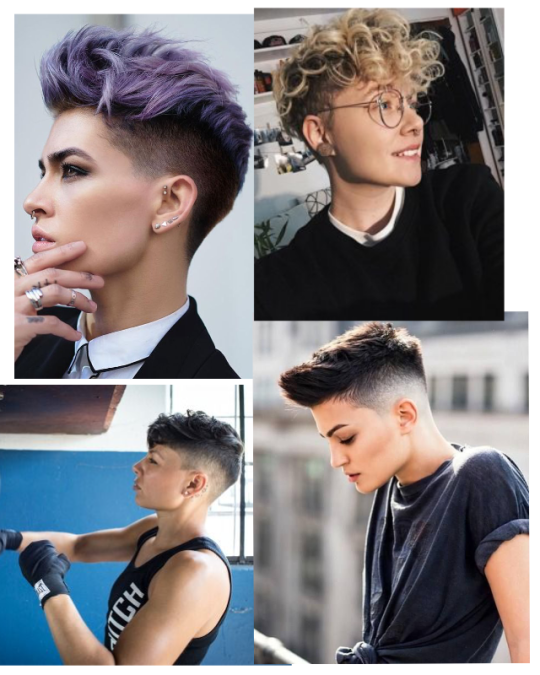
i’m obsessed with undercuts. it looks so so cute with curly hair or straight hair. i also like how it can be really soft or really severe depending on how you style it. it’s also super androgynous
5. short shag

terrible name but a super cute haircut. it’s softer than some of the other ones i have listed if that’s what you’re into. looks cute with curly or straight hair. gives me a bit of baby butch vibes.
6. pompadour

love it! classic! that janelle monae look? beautiful. it lengthens your face if that sweetens the deal for anyone. very dependable and handsome butch look. would highly recommend.
7. curly mohawk

this hairstyle is VERY important to me as a gay because it makes women look beautiful. the top right girl is literally my dream girl. also you can style it soft or really punk which is super hot.
8. random pics of women i found

wow i fuckign. i just love women! look at that! we really do short hair well ladies! thanks for reading my post i hope you enjoyed
54K notes
·
View notes
Photo
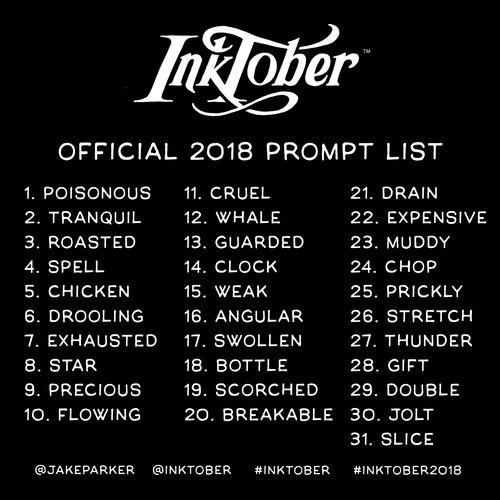
Sooooo…. I know its still a month away but the Inktober prompts for this year are up and I’ve not seen a post going around with them yet. I think this would be something you guys are interested in :P
Inktober Information
Inktober is a yearly art challenge intended to encourage artists to practice and improve their skills.
The ‘rules’ are simple: Draw something each day, using whatever medium you like, then post it with the tags #inktober and #inktober2018
Don’t like the official prompts?
Don’t worry! You can draw whatever you want for each day, but if you want some prompts there are plenty of alternative prompt lists out there.
Also, here on @art-and-drawing-prompts I post a new art prompt every single day, in October and through the rest of the year too!
6K notes
·
View notes
Photo

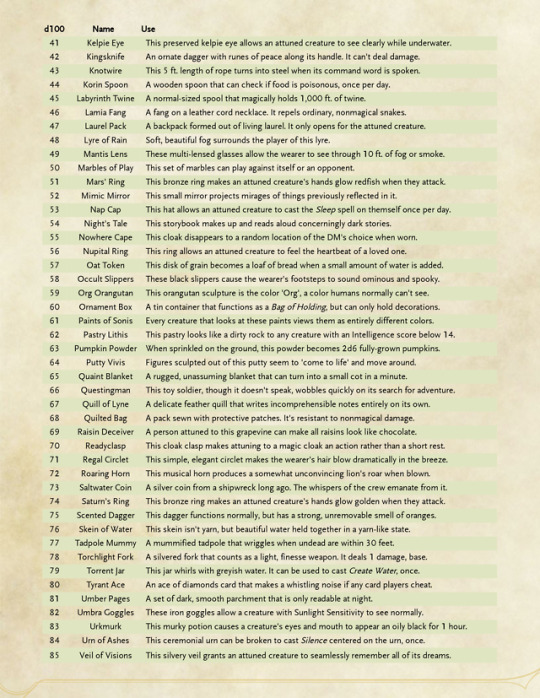
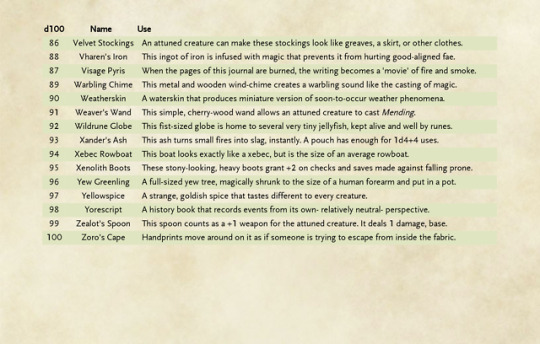
The fourth installment of the d100 Common Magic Items. A warning that some might be verging into ‘Uncommon’ and some are sinking into joke territory.
Created with lots of help from @korvusdnd
Note: These range from common to uncommon. In general, their cost can be higher than what it says on the sheet (Common magic items run from 50gp to 100gp, and uncommon can be as much as 500 gp, but they might be worth more in settings where magic is rarer). They are intentionally vague at times, so that the DM can fill in whatever details are appropriate.
13K notes
·
View notes
Photo

I made a D&D inspired Inktober prompt list. You can interpret it any way you want to. Use your own D&D characters, use other members of your party or create new characters! Most importantly, have fun!
If you tag me and use the hashtag #DnDinktober, I can look at your creations!
Keep reading
818 notes
·
View notes
Photo

Writing systems–Infernal
As is par for the course, WOTC doesn’t really have much information about Infernal available. There is a single image of “infernal script” that was released on Twitter in November of 2015, but no other information has been forthcoming. While it’s possible that we’ll learn more in the sections of Mordekainan’s Tome of Foes that are dedicated to the Blood War, the official D&D alphabets released so far have just been ciphers of the English alphabet, which I find disappointing.
Here is a writing system using as many of the glyphs from the official Infernal sample as possible, supplemented with letterforms based on historical court hands. This form of the alphabet is designed to be used with Lojban, a constructed logical language that I use to represent Infernal in my campaign setting, but you’re welcome to use it however you want!
667 notes
·
View notes
Text
Rations for various RPG Races
[[ Source. Original creator: wats6831. Additional information and images linked under each one. Love this project? Support it here! ]]
Universal:
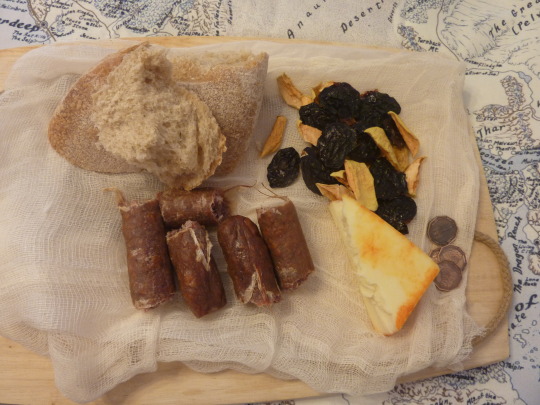
Homemade artisan herb bread, home grown and dried apples and prunes, uncured beef sausage, munster cheese. Made a small bag from cheesecloth and tied it closed.
Discussion thread here.
Human:

Waterdhavian oat loaf (handmade irish soda bread, fresh smoked ham shank, “dessert” pear, Corm Orp “mountain” bleu cheese served on butternut squash, imported Saerloon broccoflower (Romanesco), mixed garden vegetables (carrots and radishes), Misty Forest chestnuts.
More images here. Discussion thread here.
Dwarf:

Garlic chicken livers, smoked and peppered cheese, spiced pork sausages, hard tack, dried vegetables, dried wild mushrooms.
Discussion thread here.
Elf:

Top left to right: Evereskan Honey Comb, Elven Travel Bread (Amaretto Liquer Cake with custom swirls), Lurien Spring Cheese (goat cheese with garlic, salt, spices and shallots), Delimbyr Vale Smoked Silverfin (Salmon), Honey Spiced Lichen (Kale Chips), and Silverwood Pine Nuts.
Discussion thread here.
Halfling:
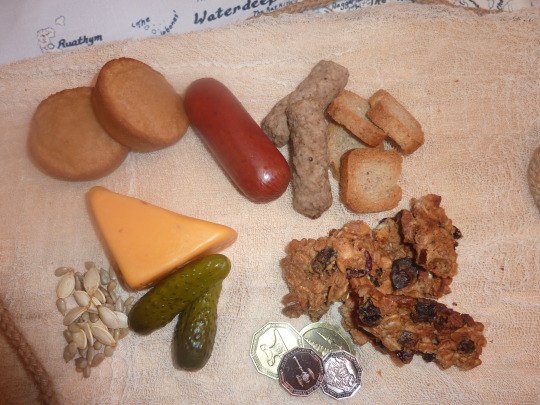
From upper left: “Honeytack” Hard tack honey cakes, beef sausage, pork sausage mini links, mini whole wheat toast, cranberry cheddar cheese mini wedge, mini pickles, pumpkin and sunflower seeds, lower right is my homemade “travel cake” muesli with raisins, golden prunes, honey, eggs and cream.
Discussion thread here.
Half-Orc:

Wrapped in cheesecloth and tied in burlap package. Forest strider drumsticks, molasses sweet wheat bread “black strap”, aged Munster, hard boiled eggs, mixed wild nuts.
Discussion thread here.
Orc:
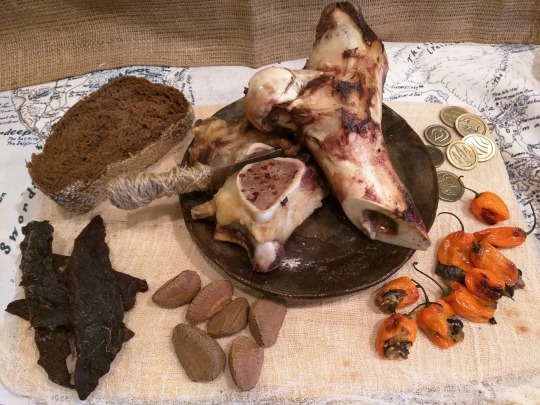
Orcs aren’t known for their great cuisine. Orcs prefer foods that are readily available (whatever can be had by raiding), and portable with little preparation, though they have a few racial delicacies. Toughs strips of lean meat, bones scavenged from recent kills, and dark coarse bread make up the bulk of common orc rations.Fire roasted rothe femur (marrow is a rare treat) [beef femur], Strips of dried meat (of unknown origin) [homemade goose jerky], foraged nuts, only edible by orcs….nut cracker tusks [brazil nuts], coarse black bread, made with whatever grains can be pillaged [black sesame bread], Pungent peppers [Habanero peppers stuffed with smoked fish and olives].
More images here. Discussion thread here.
Gnome:
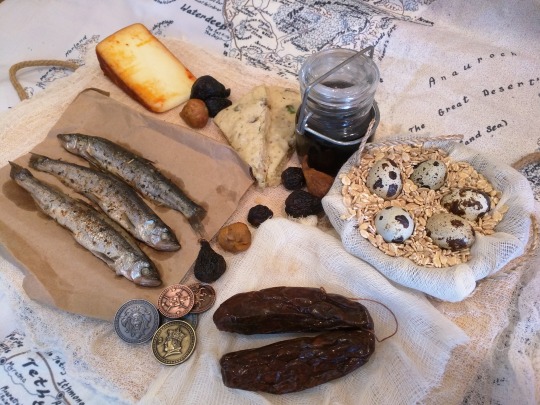
Pan fried Delimbyr smelt, spiced goat cheese (paprika crusted hand pressed Fontina), Gnome shortbread (savory pistachio), glass travel jar filled with Secomber Red (wine), hard boiled quail eggs packed in rolled oats (to keep safe), dried figs from Calimshan, and Southwood smoked goat sausage (blood sausage).
More images here. Discussion thread here.
Duergar (gray dwarves):
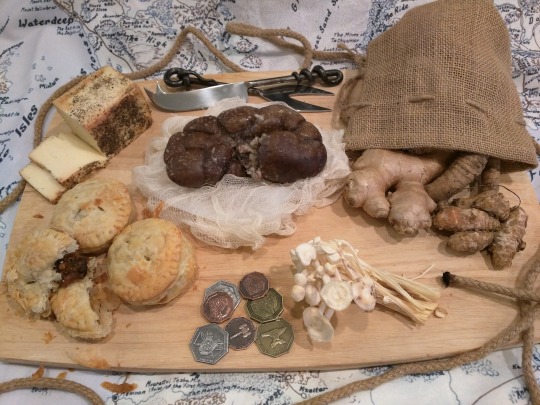
The Duergar (gray dwarves) are the hated subterranean cousins of the surface dwelling Shield dwarves. Vast Duergar kingdoms exist in the Underdark beneath Toril’s surface. Duergar are known for their foul tempers, penchant for cruelty, grim and bitter dispositions. Their food is as coarse and uncouth as they are. Clockwise from top left: Sour Deep rothé pepper cheese (Limburger), boiled Deep rothé kidney (whole beef kidney), foraged roots and tubers; skirret and Fellroot (ginger and turmeric roots), contorted strangler fungus (Enoki mushrooms), onion & mushroom gravy hand pies (Morel mushroom with shallot and dill in cream sauce).
More images here. Discussion thread here.
Lizardfolk (This is a MEAL/feast and not a travel ration):
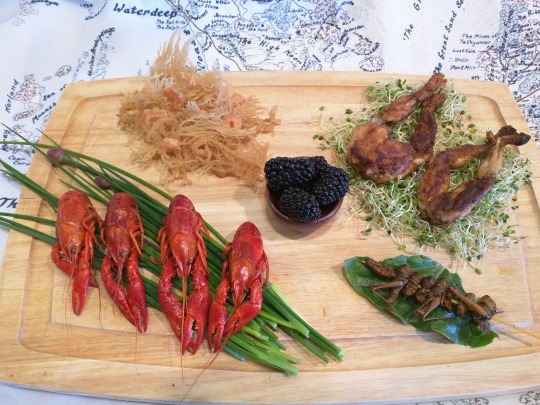
Lizardfolk are known to be omnivores, forage for a surprising variety of foods found within the confines of their marshy environs, in this case the Lizard Marsh near Daggerford. Fresh caught boiled Delimbyr Crayfish on wild chives, coastal carrageen moss entrapping estuary brine shrimp (irish moss, dried brine shrimp), Brackish-Berries (blackberries), Blackened Dart-Frog legs (frog legs) on spring sprouts (clover sprouts), roasted bog bugs on a stick!
More images here. Discussion thread here.
Drow (This is a MEAL/Party Fare and not a travel ration):

From top left: Menzoberranzan black truffle rothe cheese (Black Knight Tilsit), Donigarten Moss Snails (Escargot in shallot butter sauce), Blind cave fish caviar in mushroom caps (Lumpfish caviar), faerzress-infused duck egg imported from the surface Realms (Century egg), Black velvet ear fungus (Auricularia Black Fungus Mushroom).
More images here. Discussion thread here.
Mind Flayer/Illithid (This is a MEAL/Party Fare and not a travel ration):
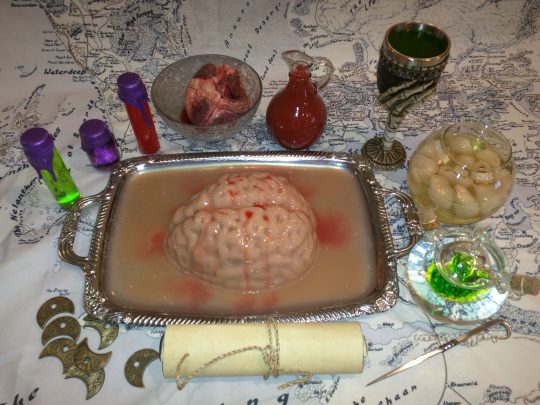
A Mind Flayer dwelling in the Underdark of the Forgotten Realms might celebrate a special event with a smorgasbord of illithid delicacies. Center: An extra large brain (former minotaur servant who did not go quietly) plated on tinged cerebrospinal fluid. Right: peeled kuo-toa eyeballs in serous fluid (with mithral eating pick) TOP RIGHT: green mushroom wine TOP: drow slave heart (tastes better than human) with savory sanguine sauce. All served amongst various potion bottles, scroll and alchemical vessel.
More images here. Discussion thread here. Some “making of” and reaction photos here.
Ogre Holiday Platter (This is a MEAL/Party Fare and not a travel ration):

Ogres are well known for legendary feats of horrendous brutality, torture, and savagery. It’s no surprise they consider flayed skin, fingers, toes and ears (especially elf ears) as special delicacies. Ogres revel in the misery of others. Crushing the smaller races…then eating their crispy bits is considered a true perverse joy, worthy of what passes for brutal ogre celebration. Paired alongside campfire roasted rabbit and coarse grain bread.
Discussion thread here. More images here. ]]
221K notes
·
View notes
Text
Non-Boring Environments that need Fantasy Representation
Tropical Rainforests

Scrubland/Dry Forests. For extra effect make them the sort that burn very often; some native plants never germinate until after a fire, and some animals not only rely on fire to smoke out prey, but may even start them themselves.
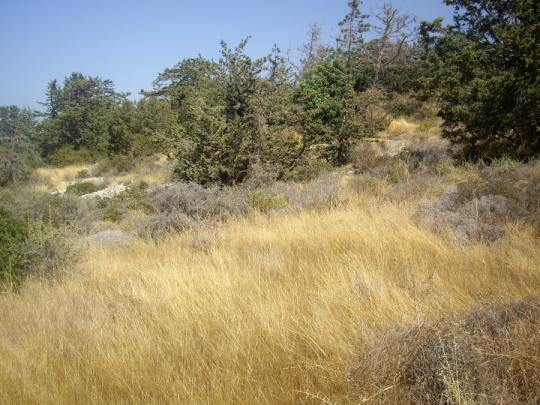
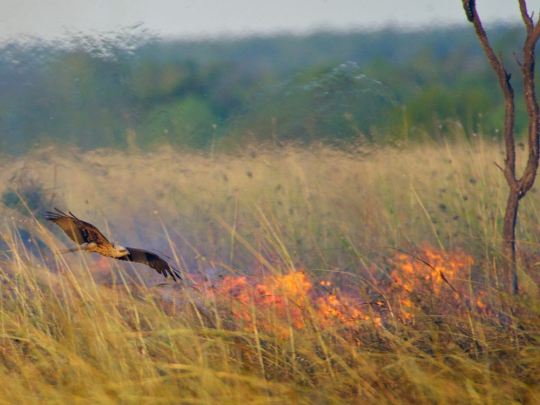
Savannas/Tropical Grasslands

Temperate Rainforests. I almost didn’t include this bc New Zealand is covered in them, and that’s where they filmed Lord of the Rings. But tbh, no one really knows about them, so it belongs here
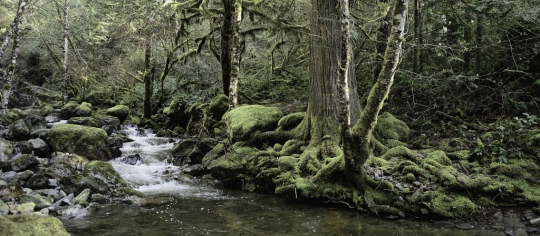
Taiga Forests

Barren Tundra, perfect for some extreme seasonal dichotomy


Polar Ice Sheets

Desert-Grasslands (arguably the same as Scrubland but Australia’s good at adding its own twists)

Barren Desert

If you like Cacti, look at American Deserts like the Sonoran

Salt Flats

Soda Lakes and Alkaline Lakes
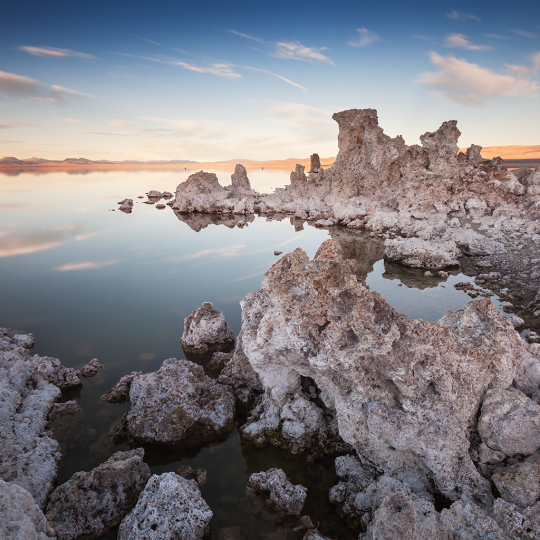
Madagascar’s Karst Limestone Formations

Madagascar’s Spiny Forests

Madagascar’s Baobab Forests

Madagascar’s Subhumid Forests (Madagascar is cool as hell ok)

Danxia Landforms

Badlands/Mountainous Deserts

Steppes and Highland Prairies

Flood Basalts


Newly-Formed Islands, still rife with Volcanic activity


Now for Underwater Environments, sure Coral Reefs are cool.

But there are SO MANY other kinds of environments for aquatic settings, it’s unbelievable:
Seaside Cliffs

Archipelagos. Not just Tropical Island chains like Polynesia (Moana anyone?) but also Coldwater Archipelagos like the Aleutians.


Tidal Flats

Bayous/Cypress Swamps


Tropical River Basins, AKA Seasonally Flooded Rainforests
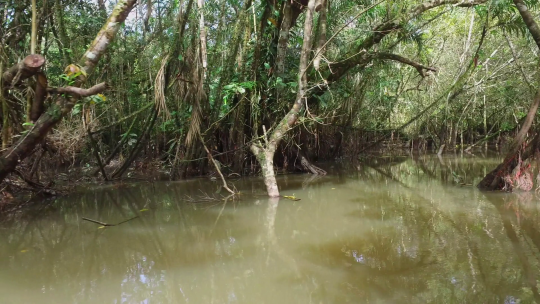
Mangrove Swamps/Deltas/Beaches
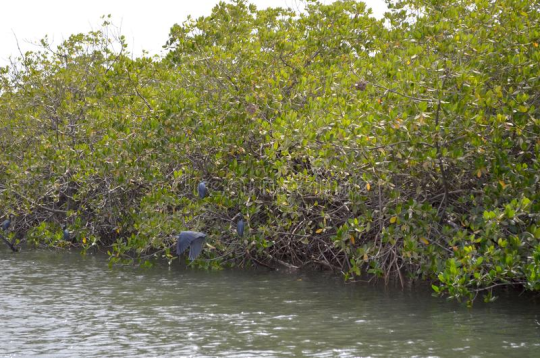
Kelp Forests
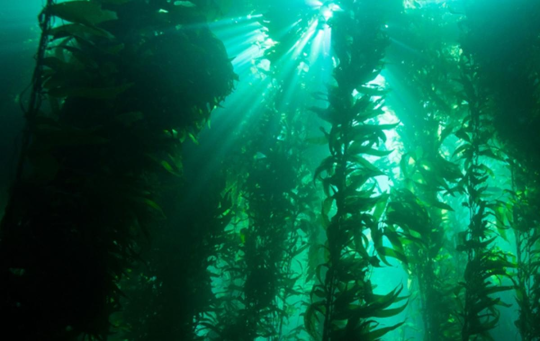
The Open Ocean

Coastal Seabeds
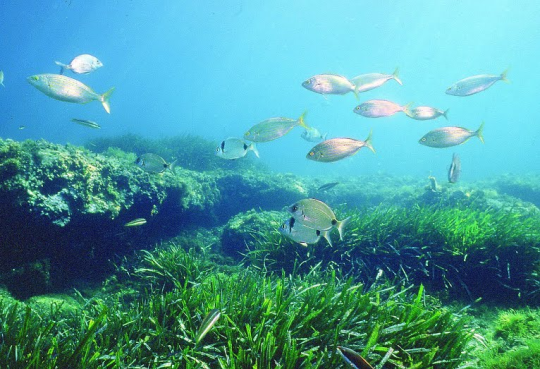
Rocky Beaches with Tidepools

And there are a LOT more I could name but this post is already obscenely long as is, if you’d like to toss in your own go right ahead, but my point is if you limit yourself to European Deciduous Forests you’re a wimp.
109K notes
·
View notes